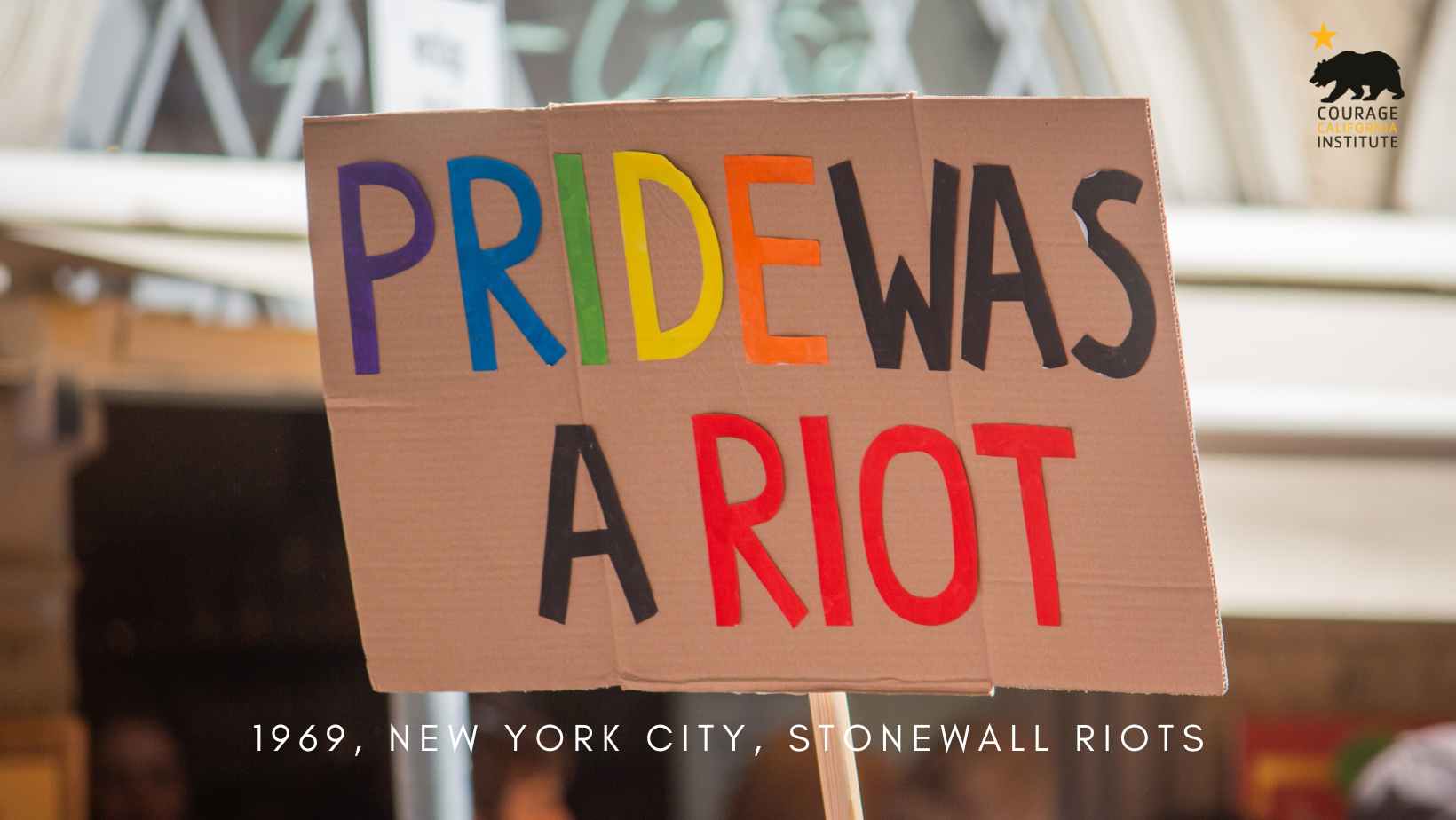In the early hours of June 28, 1969, a routine police raid on the Stonewall Inn, a gay bar in Greenwich Village, New York City, ignited a spark that would forever alter the landscape of LGBTQ+ rights.
The Stonewall Inn was a gay institution in Greenwich Village, one of the only places where the community could gather, dance, and be themselves freely. The police constantly raided the bar searching for alcohol, as the Stonewall didn’t have a liquor license. On June 28, the people in Stonewall had had enough, and they refused to submit to the raid. What began as a defiant refusal by patrons to endure further harassment blossomed into days of protests and clashes with law enforcement, ultimately serving as a profound catalyst for the modern LGBTQ+ movement, reverberating across the nation, particularly in the politically progressive state of California.
Before Stonewall, life for LGBTQ+ individuals was largely shrouded in secrecy and fear. Laws criminalized same-sex relations and gender-nonconforming attire, leading to constant police raids on gay establishments, public humiliation, and arrests. While earlier “homophile” organizations existed, advocating for assimilation and respectability through more passive means, what became known as the Stonewall Uprising marked a decisive shift. It was a raw, spontaneous outburst of pent-up anger and frustration, a collective declaration that the LGBTQ+ community would no longer remain silent about the harassment.
The protests and visible defiance at Stonewall galvanized a generation. Within weeks, new, more radical organizations like the Gay Liberation Front (GLF) emerged, embracing direct action and public protest. The rallying cry shifted from quiet appeals for tolerance to an emphatic demand for liberation and equality. Los Angeles held the very first Pride march in June 1970 to commemorate the Stonewall riots, solidifying a collective identity and a visible presence.
California, already a hub of social activism and counterculture movements in the 1960s, quickly became a crucial battleground for LGBTQ+ rights post-Stonewall. The spirit of rebellion resonated deeply within its existing, albeit often clandestine, LGBTQ+ communities. Prior to Stonewall, California had its own history of resistance, including the 1959 Cooper Do-nuts riot in Los Angeles and the 1966 Compton’s Cafeteria riot in San Francisco, both driven by police harassment. These events, while less widely known than Stonewall, foreshadowed the escalating defiance.
In the aftermath of Stonewall, California saw a surge in LGBTQ+ organizing. Groups like the Gay Activists Alliance and various liberation fronts were formed, advocating for legislative change. The focus shifted from merely surviving to actively demanding legal protections and recognition. In 1975, California made a significant stride by decriminalizing sodomy through Assembly Bill 489, a landmark achievement that chipped away at the discriminatory legal framework that had long oppressed LGBTQ+ individuals. This was a direct reflection of the renewed activism and political pressure generated by the post-Stonewall era.
The ripples of Stonewall were also evident in electoral politics. Harvey Milk, a charismatic gay activist, famously became the first openly gay person to be elected to public office in California, winning a seat on the San Francisco Board of Supervisors in 1977. His victory, though tragically cut short, symbolized the growing political power and visibility of the LGBTQ+ community. Milk’s activism, deeply rooted in the post-Stonewall ethos of “coming out” and taking a stand, inspired countless others to engage in the political process.
The Stonewall riots were not the genesis of the LGBTQ+ movement, but they were its turning point. They transformed a marginalized and previously hidden community into a visible and vocal force demanding their rightful place in society.
In California, this seismic shift translated into tangible legal victories, increased political representation, and a vibrant, unapologetic LGBTQ+ culture that continues to pave the way toward full equality. But we are still far from full equality, and the fight is ongoing.


